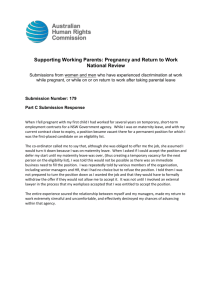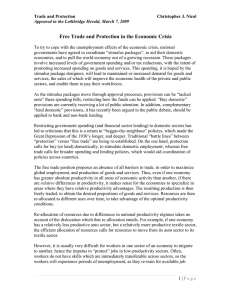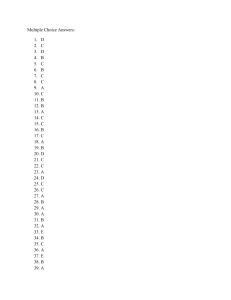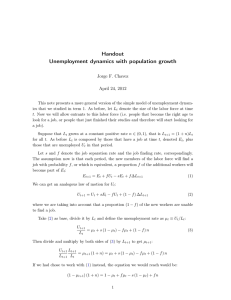Document 13390053
advertisement
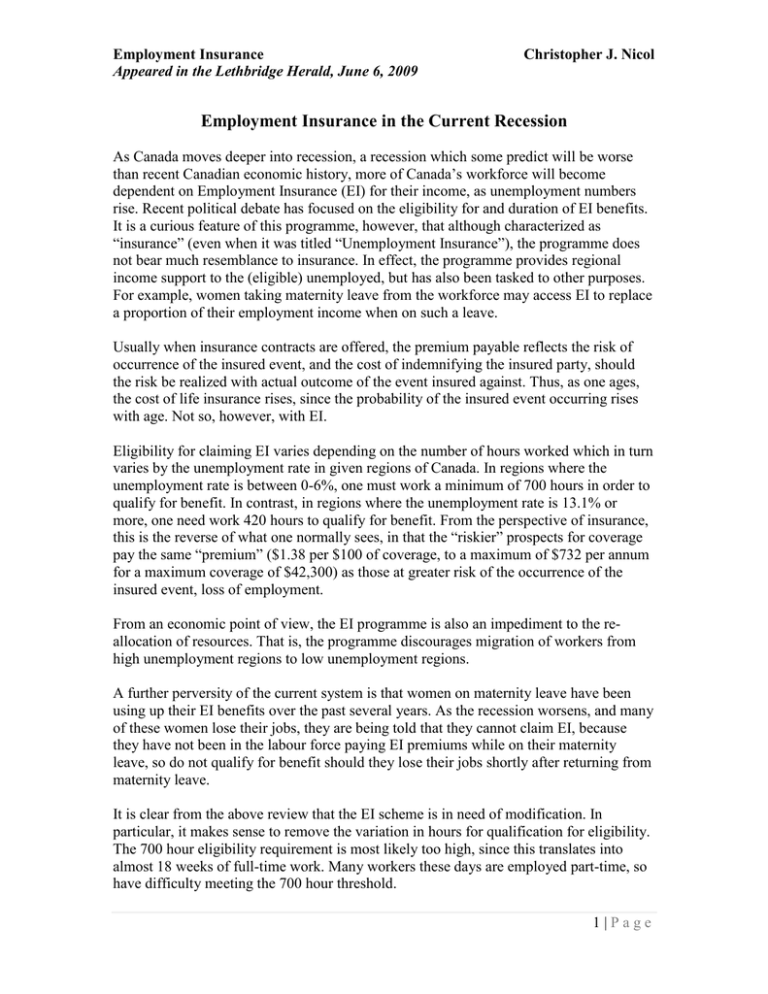
Employment Insurance Appeared in the Lethbridge Herald, June 6, 2009 Christopher J. Nicol Employment Insurance in the Current Recession As Canada moves deeper into recession, a recession which some predict will be worse than recent Canadian economic history, more of Canada’s workforce will become dependent on Employment Insurance (EI) for their income, as unemployment numbers rise. Recent political debate has focused on the eligibility for and duration of EI benefits. It is a curious feature of this programme, however, that although characterized as “insurance” (even when it was titled “Unemployment Insurance”), the programme does not bear much resemblance to insurance. In effect, the programme provides regional income support to the (eligible) unemployed, but has also been tasked to other purposes. For example, women taking maternity leave from the workforce may access EI to replace a proportion of their employment income when on such a leave. Usually when insurance contracts are offered, the premium payable reflects the risk of occurrence of the insured event, and the cost of indemnifying the insured party, should the risk be realized with actual outcome of the event insured against. Thus, as one ages, the cost of life insurance rises, since the probability of the insured event occurring rises with age. Not so, however, with EI. Eligibility for claiming EI varies depending on the number of hours worked which in turn varies by the unemployment rate in given regions of Canada. In regions where the unemployment rate is between 0-6%, one must work a minimum of 700 hours in order to qualify for benefit. In contrast, in regions where the unemployment rate is 13.1% or more, one need work 420 hours to qualify for benefit. From the perspective of insurance, this is the reverse of what one normally sees, in that the “riskier” prospects for coverage pay the same “premium” ($1.38 per $100 of coverage, to a maximum of $732 per annum for a maximum coverage of $42,300) as those at greater risk of the occurrence of the insured event, loss of employment. From an economic point of view, the EI programme is also an impediment to the reallocation of resources. That is, the programme discourages migration of workers from high unemployment regions to low unemployment regions. A further perversity of the current system is that women on maternity leave have been using up their EI benefits over the past several years. As the recession worsens, and many of these women lose their jobs, they are being told that they cannot claim EI, because they have not been in the labour force paying EI premiums while on their maternity leave, so do not qualify for benefit should they lose their jobs shortly after returning from maternity leave. It is clear from the above review that the EI scheme is in need of modification. In particular, it makes sense to remove the variation in hours for qualification for eligibility. The 700 hour eligibility requirement is most likely too high, since this translates into almost 18 weeks of full-time work. Many workers these days are employed part-time, so have difficulty meeting the 700 hour threshold. 1|Page Employment Insurance Appeared in the Lethbridge Herald, June 6, 2009 Christopher J. Nicol In addition, women on maternity leave could be deemed to be employed while on such leave. It is to the benefit of society to support such leaves, so it makes little sense to cancel eligibility if unemployment follows shortly after a period of maternity leave. It can be argued that structuring the EI system in the above fashion will be costly, and generate government deficits. However, the recent stimulus package in the federal budget allowed for a variety of tax cuts, in an effort to stimulate the economy. Research indicates that such tax cuts rarely stimulate spending, often being viewed as transitory: a signal of future increases in taxes to finance the deficits which emerge, thus having no effect on current consumption. EI benefits, on the other hand, go directly to low income citizens, who will spend this income replacement support on their everyday needs. In addition, EI payments disappear when the economy recovers, and the unemployed workers find jobs. The use of tax cuts, on the other hand, represents foregone government income even after a recovery, making it that much harder to balance the budget. Christopher J. Nicol, Ph.D., Professor of Economics, University of Lethbridge May 18, 2009 2|Page

